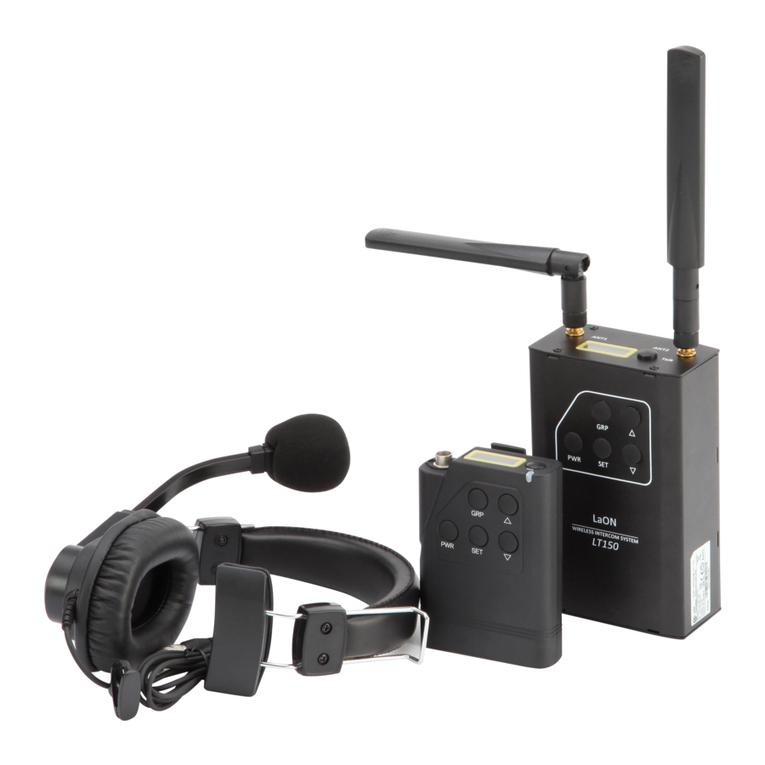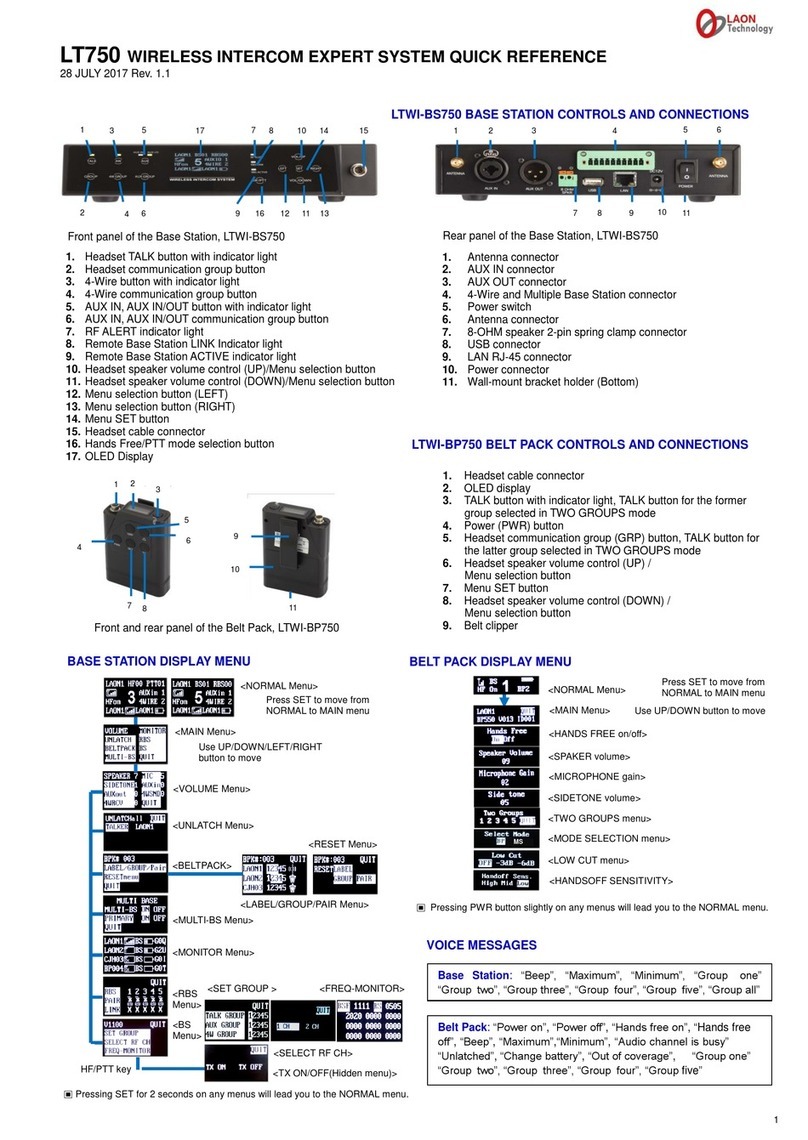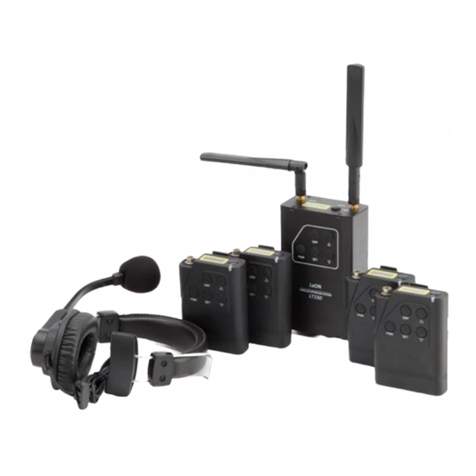
ⓒ2016 LAON Technology Co., Ltd. All rights reserved.
Implement the RBS pairing from the number ‘1’ on the display in order. Move onto ‘1’ with direction
key and press SET then the pairing will start by changing the pairing icon indication from to . If
the pairing is successfully completed, the icon will be changed to and the LINK indication on the
bottom line of the display will be changed from ‘X’ to ‘O’. You may observe the change of LINK
indication after getting out from the current display with QUIT button and return to the display again.
When failed, the pairing icon will be returned to the initial indication. If failed, confirm the power
supply, LAN cable and LINK LED status on both BS and RBS then try again.
LED status lights on the front panel of the BS and RBS
‘RF ALERT light’
When there are audio breakups seriously, RF ALERT light will go on.
‘BS LINK light / RBS LINK light’
When the BS and RBS are connected, BS LINK/RBS LINK light will go on.
‘BS ACTIVE light / RBS ACTIVE light’
When the BS/RBS exchanges data, BS ACTIVE/RBS ACTIVE light will be flashing.
Disconnect the LAN cable for the first RBS(R1) if the pairing is properly done, then, connect the next
RBS for pairing. Again, for the pairing, RBS should be connected one by one exclusively and have to be
located in order from #1, the nearest area from the BS, to #5, the farthest area from the BS.
Implement the pairing one by one for each RBS with the same process above.
If you want to test the RBS coverage at this stage, while all the RBSs are placed at each area with
cabling, reboot the BS with the power toggle switch while the RBS is TURNED ON, then wait for one(1)
minute for the RF scan of BS and then 20 seconds for each RBS until the system is fully activated.
With above pairing setup and system reboot, each BP within the RBS coverage will be linked to the
respective RBS and the wireless intercom communication will be activated. You may wish to test the
BP communications and RBS coverage. As shown from the figure 9 below, BP users will be able to
confirm to which device the BP is linked from the first row of the BP display as well as the signal
strength, battery status, group number selected, BP ID and etc. If the BP is linked to BS within the BS
coverage, the display indicates ‘BS’and if ‘RBS’, ‘R1’‘R2’‘R3’… ‘R5’.
‘Device linked’‘Group #
[Figure 9] NORMAL menu (Initial display of BP)
And, when there are data exchanges by communications, the ‘RBS ACTIVE’ LED light of the BS and ‘BS
ACTIVE’LED light of the RBS will go on.
NOTE
During the BS and RBS pairing process, communication will be inactivated.
When users changed any settings by accident, there could possibly a disconnection of the
pairing between the BS and RBS unintentionally. If you have any issue on communication,
firstly check out the power supply with PoE Hub, specification of the LAN cable in use, LAN
cable connection status and then RF LINK and ALERT light indications. And implement the
pairing setup again to retrieve.




































